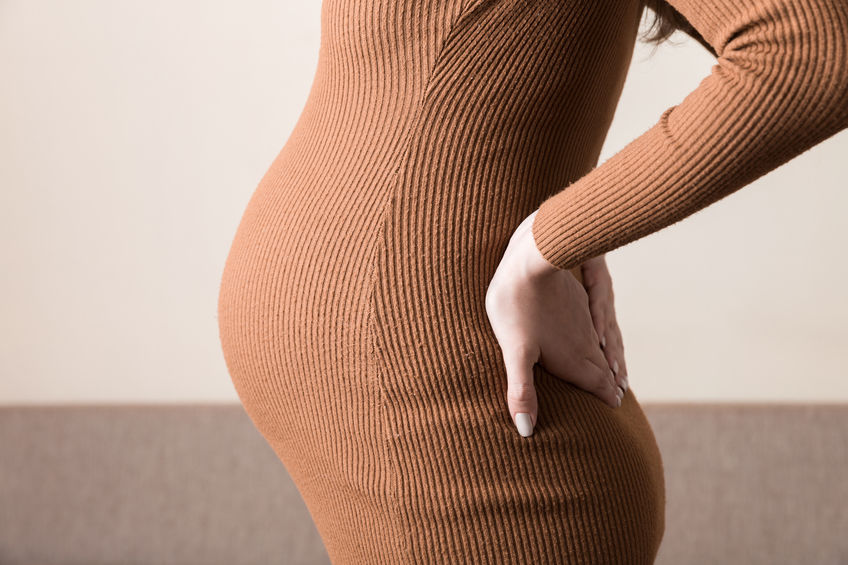Back Pain During Pregnancy?
Natural Relief is here!
One of the most common complaints with pregnancy is back pain, especially as you approach your due date. This is, in part, due to the changes that are occuring in your body as it adapts to the growing size of the baby. So what changes happen to help accommodate for the baby? Three things:
1. Ligament laxity
-
- Ligaments connect bones to other bones and help to stabilize your joints.
- Your body increases its production of the relaxin hormone, which causes your ligament to become looser and allow for greater elasticity. Your body does this in preparation for giving birth to the baby. This allows the pelvis to become more mobile and help the baby to exit the body.
- However, due to the looser ligaments, there is now an increase in the motion between your bones at the joints. This may lead to increased pain, especially in your low back.
2. Low back becomes more arched
-
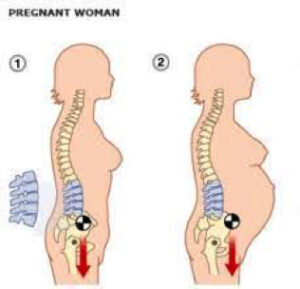 In order to accommodate for the increased weight of the baby on your front side, your body adapts its posture. This is primarily done by rotating the pelvis forward and arching the low back.
In order to accommodate for the increased weight of the baby on your front side, your body adapts its posture. This is primarily done by rotating the pelvis forward and arching the low back.
3. Abdominal muscle (rectus abdominis) splits
-
- You have several abdominal muscles, but the one that runs vertically and creates a “6-pack” is called your rectus abdominis. This muscle is made up of a R side and L side and is joined the middle by connective tissue called the linea alba.
- In order to accommodate for the increasing size of the baby, your rectus abdominis separates at the linea alba. For most women, the rectus adominis rejoins after giving birth. However, this can take several months.
- This reduces your ability to create as strong of a contraction through your abdominal musculature, which forces the other muscles of your core (your back and butt muscles) to work harder. This may lead to increased pain through your back as well.
BUT just because your body is making these changes, doesn’t mean that there is nothing you can do! In fact, there are many stretches and core strengthening exercises that can be done from the comfort of your own home to help reduce back pain and improve your core strength.
STRETCHES
GENERAL RULES OF STRETCHING
- Do NOT bounce.
- Only stretch until you feel a gentle stretching sensation. Do NOT push into pain.
- Hold the stretch for 45-60 seconds
These 4 stretches, done properly, often bring relief.
Prayer stretch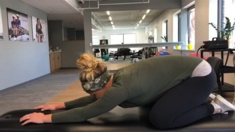
-
- Start on you hands and knees
- Keeping your hands where they are, slowly sit back onto your heels.
- Gently tuck your head down between you elbow until you feel a stretch at the back of your shoulders or in your low back
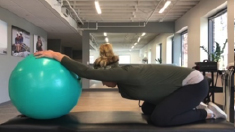 If you are having trouble placing your hands on the ground comfortably, see the modified stretch.
If you are having trouble placing your hands on the ground comfortably, see the modified stretch.
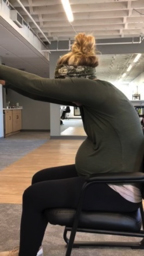 Upper back/Rhomboid Stretch
Upper back/Rhomboid Stretch
-
- Sit or stand with good posture.
- Clasp hands in front of you at shoulder level.
- Reach forward, slightly rounding your shoulders and tucking your chin down until you feel a stretch between your shoulder blades.
- Taking a deep breath and holding it may increase the stretch
Hip flexor stretch
-
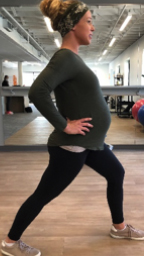 Stand up straight with your toes pointed forward on both feet.
Stand up straight with your toes pointed forward on both feet.- Take one step forward into a lunge position, bringin the front leg two feet in front of the back leg.
- Perform a pelvic tilt by pulling your belly button toward your spine to engage your abdominal muscles
- Bend the front knee slightly (avoid leaning forward from the hips) until a stretch is felt in the straight leg
- Hold 45-60 seconds
- Return to starting position and repeat on the other side
Cat/Camel
-
- Start on your hands and knees.
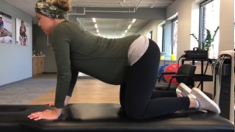
- Sink your spine down toward the floor, lifting your head up slightly to make a U shape with your body.
- HOLD 10 SECONDS
- Reverse the movement and lift your
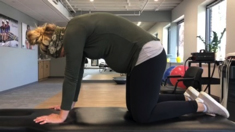 spine up toward the ceiling, tucking your chin down like an angry cat, making an upside down U with your body.
spine up toward the ceiling, tucking your chin down like an angry cat, making an upside down U with your body. - HOLD 10 SECONDS
- Continue to move back and forth to each position until you have completed 5 repetitions in each position
- Start on your hands and knees.
STRENGTHENING
Pelvic Tilts

-
- Lie on your back with your knees bent and your feet flat on floor.
- CAUTION: if you are more than 20 weeks pregnant, you should NOT do this exercise on your back. Instead, perform in STANDING position as shown.
- Draw your abdominal muscles in, pulling your belly button toward your spine while continuing to breathe.
- Hold for 5-10 seconds
- Rest and allow your muscles to relax
- Lie on your back with your knees bent and your feet flat on floor.
Practicing Good Posture
-
- Your posture can always be improved. This will help to reduce the strain through your low back and help prevent pain.
- You should try to perform the pelvic tilt (see above exercise) during all standing activities to the best of your abilities. This will help to reduce the curve in your low back.
- Bring your shoulders down and back.
- Tuck chin.
- Slowly move your chin straight back 1-2 inches until your ears are in line with your shoulders
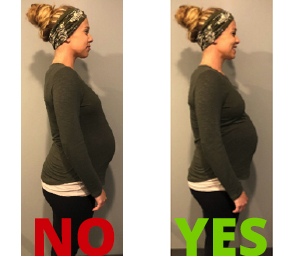
Still Curious About Chiropractic and Physical Therapy? We’d Love to Educate You.
Chiropractic medicine has countless benefits. To schedule a consultation or learn more about what this amazing branch of medicine can do for you, give Minneapolis Health and Wellness a call today at 612-750-7168.
